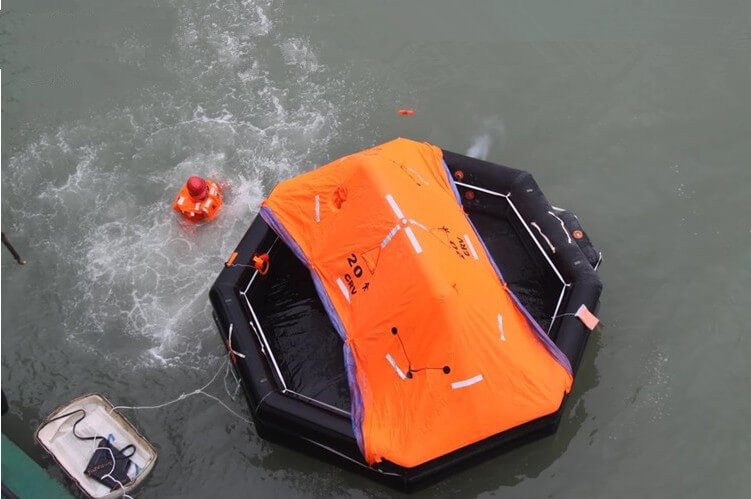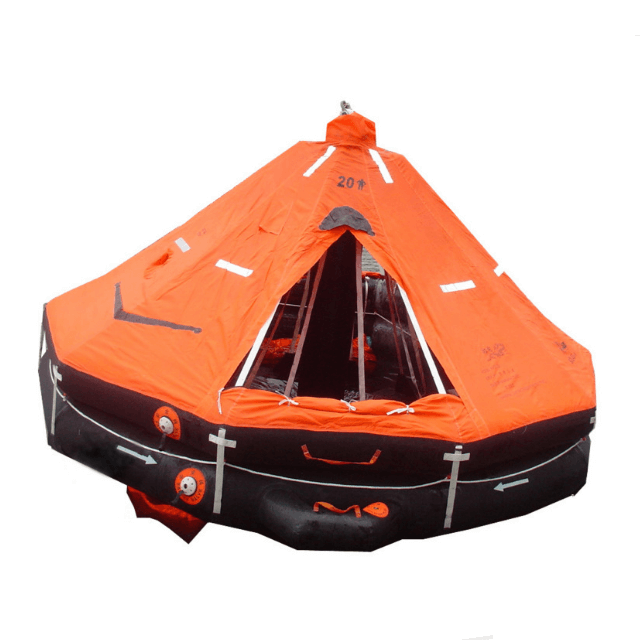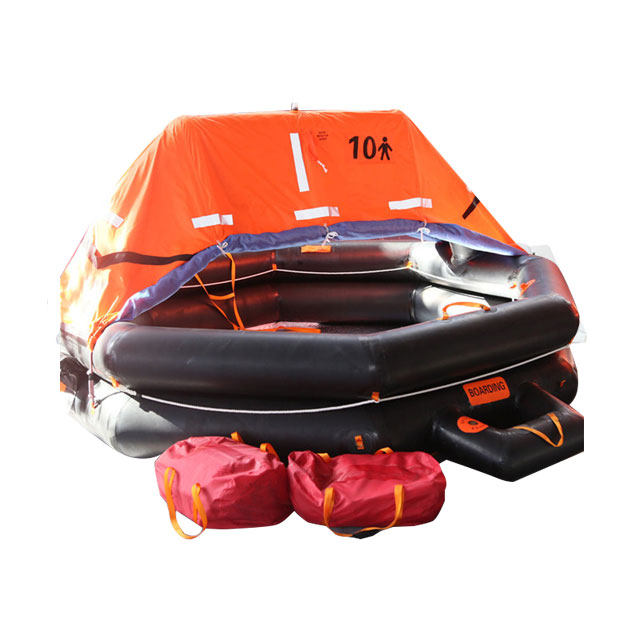What are Common Types of Inflatable Life Rafts and How to Select the Suitable Type
In the realm of maritime safety, Inflatable Life Rafts play a pivotal role, offering a dependable means of survival during emergencies at sea. Engineered to keep individuals afloat and secure, these inflatable structures serve as crucial lifelines until rescue arrives. As technology and engineering progress, various types of inflatable life rafts have emerged, each tailored to specific needs and scenarios. This article explores the diverse world of inflatable life rafts, including their types, features, and considerations for selecting the most suitable option.

Common Types of Inflatable Life Rafts
Throw-Overboard Inflatable Life Rafts
Design: Intended to be manually thrown into the water.
Activation: Automatic upon immersion or manual activation.
Use: Common on smaller vessels with limited deck space.
Davit-Launched Inflatable Life Rafts
Design: Installed on the ship’s deck in a cradle and the life rafts launched using davit systems.
Activation: Manual or hydrostatic launch.
Use: Found on larger vessels or those adhering to specific safety regulations.

Canister-Packed Inflatable Life Rafts
Design: Housed in a rigid canister on the ship’s deck or deckhouse.
Activation: Manually or automatically released and inflated upon immersion.
Use: Versatile, suitable for various vessel types, providing protection during inflation.
Valise-Packed Inflatable Life Rafts
Design: Compact and versatile, stored in a soft valise.
Activation: Manually launched and inflated upon immersion.
Use: Lightweight and easily deployable, ideal for vessels with limited storage space.
Reversible Inflatable Life Rafts
Design: Opens at the top, allowing easy boarding from the water.
Capacity: Accommodates a larger number of people for efficient evacuation.
Use: Suitable for calm sea conditions and rapid deployment scenarios.
Self-Righting Inflatable Life Rafts
Design: Includes a self-righting mechanism for stability in rough seas.
Stability: Self-righting inflatable life rafts are ideal for vessels navigating unpredictable and difficult waters.
Aviation Inflatable Life Rafts
Design: Specifically for aircraft emergencies, compact and lightweight.
Portability: Easily stowed on aircraft and manually or automatically inflated upon ditching.
Use: Essential for flights over water, ensuring passenger and crew safety in aviation emergencies.
Design: Extended survival at sea, often equipped with additional features.
Capacity: Larger and capable of sustaining occupants for an extended duration.
Use: Ideal for offshore vessels and long-distance voyages.
Coastal Inflatable Life Rafts
Design: Suitable for coastal waters and shorter voyages.
Compact: Smaller and more compact than offshore rafts.
Use: Designed for vessels operating in areas with easy access to rescue services.
Inflatable Life Rafts with Canopy
Design: Equipped with a canopy for protection from the elements.
Shelter: Enhances survival chances in adverse weather conditions.
Use: Recommended for vessels operating in regions with unpredictable weather.

Key Factors for Choosing a Suitable Inflatable Life Raft
Selecting the right inflatable life raft is a critical decision impacting maritime safety. Consider the following factors to ensure the chosen life raft suits the vessel's needs:
Vessel Type and Size: Match the raft to the vessel's size, type, and stability.
Occupancy Capacity: Ensure the raft accommodates both passengers and crew.
Operating Environment: Consider sea conditions, climate, and potential exposure to adverse weather.
Regulatory Compliance: Verify compliance with international maritime safety regulations.
Deployment Method: Choose a deployment method that suits the vessel's characteristics.
Stowage Space: Consider available space for stowing the life raft on the vessel.
Inflation Mechanism: Examine the inflation mechanism and its reliability.
Additional Features: Explore features like canopies, survival equipment, and signaling devices.
Maintenance and Inspection: Consider maintenance requirements to ensure proper operation.
Training and Familiarization: Ensure the crew is trained in the deployment and use of the chosen life raft.
Conclusion
The evolution of inflatable life rafts reflects the industry's commitment to enhancing maritime safety. Choosing the best inflatable life raft demands careful consideration of vessel specifications, operating conditions, and safety regulations. As technology advances, innovative features in inflatable life rafts will contribute to higher safety standards and increased survival chances in emergency situations at sea.
- Art
- Causes
- Crafts
- Dance
- Drinks
- Film
- Fitness
- Food
- Giochi
- Gardening
- Health
- Home
- Literature
- Music
- Networking
- Altre informazioni
- Party
- Religion
- Shopping
- Sports
- Theater
- Wellness


